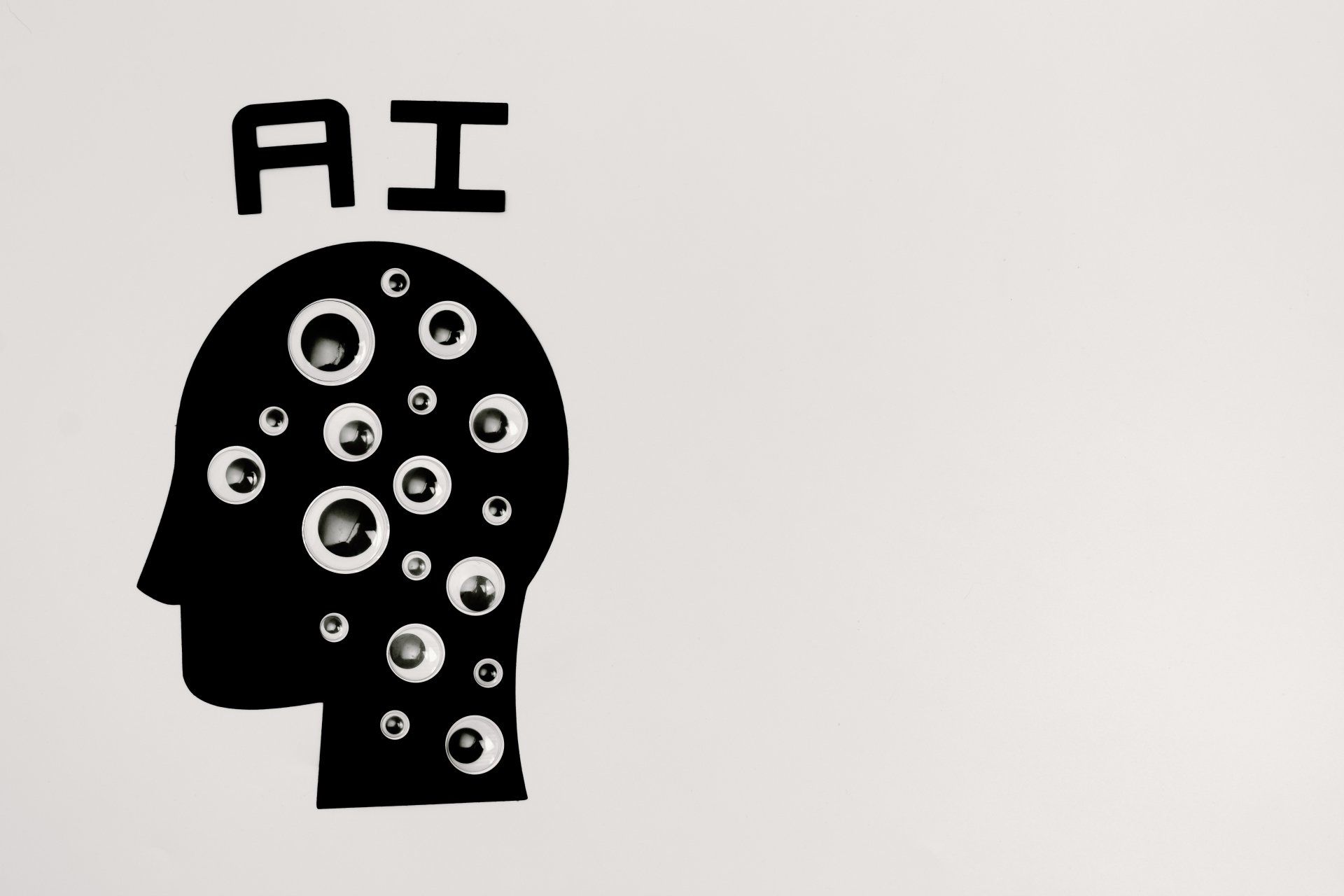The rise of artificial intelligence in web design
In recent years, artificial intelligence (AI) has become a lot more prominent in web design – and it’s no surprise! AI has advantages for everyone involved in a website – from the designer to the brand to the website visitor or customer. It has become a critical part of web design, helping with everything from building and customisation of websites to the way users experience them.
AI is a branch of computer science which makes computers simulate human intelligence to perform certain tasks. Computers use machine learning and natural language processing to achieve this. With machine learning, AI systems can improve their performance without being given new instructions by a web developer. Instead, AI learns new behaviours from all the data it receives and its interactions with them.
In many cases, AI is so advanced that it can be difficult to distinguish between human and AI interactions.
Perhaps the best known form of AI is virtual assistants, like Apple’s Siri or Amazon’s Alexa. AI is also responsible for the chatbots on many websites, personalised product recommendations on sites like Amazon, viewing recommendations on services like Netflix and for matching drivers and passengers on Uber.
The cost of implementing AI on your website will depend on the tools and services you choose, as well as the scope and scale of your website and business.
Some AI tools are completely free, while others will require a significant investment. So what is AI used for and what can it do for your business?

Personalising the online experience
Offering a personalised online experience to uses would have felt like a dream only a few years ago, but thanks to AI, it is becoming accessible and affordable to far more businesses.
Social media platforms use AI to personalise user feeds with content and adverts which should interest them, based on their online behaviour. And smaller organisations, including ecommerce businesses, can do the same. AI means businesses can:
- Add an unlimited number of unique preferences and attributes
- Easily customise their website based on user preferences
This happens automatically, without the intervention of a web developer, quickly and accurately offering a user exactly what they are looking for. So they see products and services which are more likely to be of interest to them, rather than just a general selection of your products.
AI dynamically delivers the right content to users at the right time, based on their real-time behaviour. Customised websites:
- Generate more leads than other websites
- Give a better user experience (UX)
- Can classify different types of buyer persona based on their online behaviour
- Are a useful tool for upselling and retargeting
Improved analytics
Analytics are an essential part of web design and AI offers some real advantages for analytics.
- Can handle a huge amount of data
- Quicker and more accurate results for analytics
- Can use deep learning to identify patterns
- More accessible even for smaller businesses
Automate tedious tasks
AI can be very useful in doing time-consuming, straightforward and tedious tasks for you, freeing up time for you to focus on important areas of the business, like growing the business or increasing sales. It will also reduce the costs involved in having staff carry out routine tasks.
Using AI to automate tasks in web design will help speed up the process and reduce the chances of errors or delays.
Tasks it can perform include data collection and analysis, including browsing behaviour and search history. This information can then be used to better understand important site metrics, such as user behaviour and site performance.

Improving conversions
AI can help improve conversions by analysing data to identify areas for improvement, providing insights which can be used to optimise the website for conversion.
In the past, businesses may have spent a lot of time on A/B testing to optimise their websites. This is a task which AI can now carry out – testing different variations of website elements to see which performs best, with minimal input from the website owner or developer.
AI can help with A/B testing in the following ways:
- Delivering real-time statistics
- Minimal outages due to the nature of AI
- Saving considerable time and resources
- Highly accurate and easy to adjust for other applications
Chatbots
Chatbots are perhaps the most powerful and recognisable innovation which AI has brought to us. Once a luxury used by only the biggest businesses, they are now very widely used on the websites of a huge range of businesses.
Chatbots act as customer service agents, engaging with visitors and answering queries about services or products 24/7. They are often just as helpful as real people, far more cost-effective and always available.
Conversations with chatbots may have felt frustrating and a little robotic in the past, but AI has moved on. Machine learning and natural language processing has allowed chatbots to improve their communication with website users over time, making them increasingly helpful to users.
Conversation with chatbots now feels far more authentic.
Chatbots don’t just save time and money with answering queries, they have also helped businesses make a shift towards more customer-focused websites, which prioritise bringing customers in and meeting their needs over getting their own messages out.
Over the last few years, the role of AI in web design has been huge. Its prominence has created business opportunities that just wouldn’t have existed without it. Companies like Uber have built their entire business based on AI, with their machine learning algorithm able to predict demand, helping drivers to maximise their income.
But it’s not just big companies which benefit from AI. Much smaller companies are using AI every day to gather insights into customer behaviour, learn from them and improve their operations to beat the competition.
By making it easier to develop and test pages, as well as improve the user experience, personalise offers and collect valuable data, it is no wonder AI has had such a rise in prominence in recent years. While it is unlikely AI will take over completely from human intelligence in web design and development, it is a valuable addition which looks set to stay.

More Posts.





